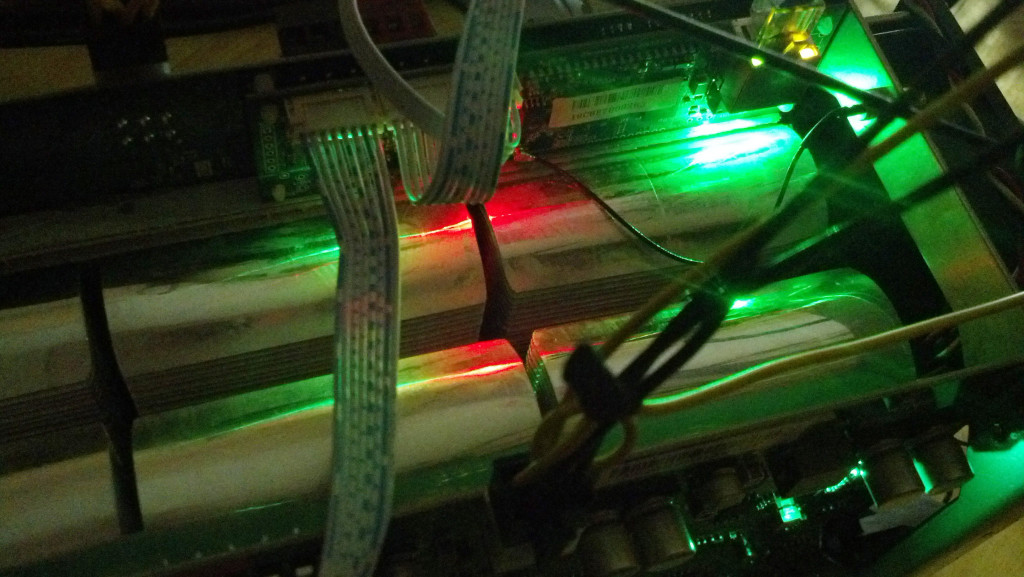The MST Reader is a series of guest posts offering overviews of interesting and timely topics that affect our world.
Dave Karlotski is a writer who blogs about cryptocurrency-related topics, among other things. He is a NH native and UNH graduate who co-founded the local newspaper The Wire, and served as its publisher until 2014. Dave also co-founded The Seacoast Summer Guide (15 years strong) and is a co-founder of the RPM Challenge https://www.rpmchallenge.com.
Bitcoin and Blockchain for Beginners
Part 2: Under the Hood
In 2009 the Bitcoin blockchain began, and bitcoins were created and exchanged over the network for the first time.
The Bitcoin blockchain a distributed public ledger of all Bitcoin transactions, ever. If it’s not recorded in the blockchain, then it didn’t happen. Every ten minutes or so, another “block” of transactions is approved by the network, which then become a part of the public record. Tools such as block explorers allow users to browse through the whole history of Bitcoin transactions, able to look up any transaction that has ever been made or address that has ever been used.
The blockchain solves the problem of trust in a digital environment. Digital files can be copied and shared endlessly, which makes them worthless as money. But bitcoins are not files or objects — bitcoin transactions exist only as recorded in the blockchain.
It’s hard to understand cryptocurrencies without shaking up the ideas we have about money. We think about money as something that we can put in our pocket and own; even when we use a bank, we visualize that we are putting it “in” the bank, and granting them permission to hold it for us. Really, though, a currency is a vast ledger system administered first by governments, and then by banks on top of that. The paper dollar in your pocket is a record of a unit whose existence — serial number and all — has been sanctioned by the government, a physical representation of a unit in a vast ledger maintained by a third party.
With cryptocurrencies like Bitcoin, no one organization owns or controls the ledger, not even the inventors of Bitcoin; instead it is public and owned by everyone who participates in the network. In order to use Bitcoin, you’re essentially agreeing to abide by the distributed ledger that is the Bitcoin blockchain.
The other half of the recipe that makes Bitcoin work is asymmetric cryptography, or, for most of us, math magic. Asymmetric cryptography allows for secure public-private key pairs: the private, secret key that you hold on to which controls your funds is used to generate public addresses at which you can receive funds from other people. However, those public addresses cannot be used to generate or see your private key. It remains secure and hidden, even though the two numbers are mathematically linked, and one of them (the public address) is visible on the blockchain.
Where do you keep your private key? In your Bitcoin wallet. Every Bitcoin wallet has, at its heart, a private key, which is a huge number. To make it easier for humans to use, that huge number is usually represented as a long series of either letters and numbers or as a string of words which can be more easily written down and backed up somewhere safe, but it is nonetheless a number.
Using this private, hidden key, the wallet software then generates public addresses as tools for public-facing currency exchange, which can be used for transactions and seen on the blockchain. These addresses are completely unique to your key, and can never be associated with any other wallet but yours. These public addresses are also large, unwieldy numbers, represented as letters and numbers, and they are hard for humans to transcribe accurately without great care — it’s very rare that someone would write down a Bitcoin address by hand. Copy-and-paste and QR codes make handling these addresses much easier.
So that’s how the blockchain solved the problem of trust. But what about value?
Making money simple is a complicated project, whichever end you approach it from.
…
Join the conversation with Market Street Talent on LinkedIn, Instagram, and X!
